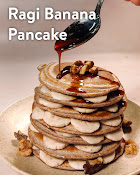The Magic of Millets: Healthy eating for a healthy future
🌾 Magical Millets: The Secret to Healthy Eating for Kids
🥣 Introduction: Rediscovering the Power of Millets
As modern parents, we're constantly navigating through endless choices in search of the healthiest food for our children. Superfoods come and go in trends, but one category of grain has quietly stood the test of time—millets. These ancient grains were once a staple in Indian and African diets and are now making a powerful comeback, especially in homes focused on sustainable, wholesome nutrition.
Millets are tiny nutritional powerhouses. They are naturally gluten-free, non-acid forming, and packed with vital nutrients like fiber, protein, calcium, iron, magnesium, and B-complex vitamins. Whether you have a toddler starting solids or a teenager with a busy schedule, millets can be seamlessly added to your child’s meals in both traditional and modern recipes.
🌟 Why Millets Are Perfect for Growing Children
Millets offer more than just nutrients—they provide long-lasting health benefits that support your child’s physical and cognitive development.
One of the biggest concerns parents have is bone health, especially during those crucial growth years. Finger millet (Ragi) is a fantastic source of calcium—much higher than rice or wheat—making it a top choice for strengthening bones and teeth. Millets are also rich in magnesium, which aids muscle development and heart health.
The fiber content in millets improves digestion, prevents constipation, and fosters a healthy gut environment, which is essential for immunity and nutrient absorption. Since millets have a low glycemic index, they release energy slowly and help kids stay full and energized longer. This makes them especially ideal for children who are always on the move or need steady energy throughout the school day.
Additionally, millets are naturally hypoallergenic, making them a safer grain option for children with wheat or gluten allergies.
🌾 Popular Millets That Kids Will Love
Each millet type has its own taste, texture, and nutritional profile. Here are four varieties that are particularly suitable for children:
-
Finger Millet (Ragi): Known for its high calcium content, ragi is ideal for toddlers and growing kids. It also contains natural iron and amino acids.
-
Pearl Millet (Bajra): A great source of energy and stamina, especially beneficial in colder months due to its warming nature.
-
Foxtail Millet: Light on the stomach but rich in protein and iron, foxtail millet supports brain development and concentration.
-
Little Millet: Quick to cook and very mild in taste, little millet is great for porridge or khichdi, especially for babies or toddlers transitioning to solid foods.
You can introduce one millet at a time and experiment with different flavors and cooking methods. Millets can replace rice, be ground into flour, or blended into smoothies, porridges, and pancakes.
🍌 Recipe Corner: Ragi Banana Pancakes (Kid-Friendly and Delicious!)
Looking for a fun and fuss-free way to introduce millets to your child? Try these Ragi Banana Pancakes—soft, sweet, and packed with nutrition.
Ingredients:
-
½ cup Ragi (finger millet) flour
-
1 ripe banana, mashed
-
1 egg (or 2 tbsp yogurt for a vegetarian version)
-
1 tsp honey or jaggery powder
-
A pinch of cinnamon
-
¼ cup milk or water to adjust batter consistency
-
Ghee or oil for cooking
Instructions:
-
In a mixing bowl, combine mashed banana with ragi flour.
-
Add egg or yogurt, honey, and cinnamon. Mix until smooth.
-
Gradually pour in milk or water until the batter is pourable but thick.
-
Heat a non-stick pan and add a few drops of ghee or oil.
-
Pour small amounts of batter and cook on medium flame until bubbles appear.
-
Flip and cook the other side until golden brown.
-
Serve with sliced fruits or a drizzle of honey.
📝 Tip: You can make mini pancake bites and serve them as tiffin snacks or after-school treats!
🎨 Creative Ways to Make Millets Fun for Kids
Getting kids to love healthy food can be a challenge—but with a few creative ideas, you can make mealtime both nutritious and exciting!
-
Use Cookie Cutters: Shape millet parathas, pancakes, or cutlets into stars, hearts, or animals to spark interest.
-
Color it Naturally: Use beetroot or carrot puree to create pink or orange millet dosas.
-
Sweet Swaps: Replace refined sugar with mashed banana, dates, or jaggery in millet desserts.
-
Make it a Game: Let kids choose toppings for their own millet bowls—like fruit pieces, coconut flakes, or nut butter.
-
Involve Them: Children are more likely to eat food they helped prepare. Let them stir batter, plate their meal, or sprinkle garnish.
🥗 Final Thoughts: Small Grains, Big Benefits
Millets are more than a healthy grain—they’re a sustainable, affordable, and future-friendly food source. By including them in your child’s diet, you're not only giving them a powerful nutritional boost but also encouraging diverse eating habits that support lifelong health.
Whether it’s a soft ragi pancake in the morning, a warm millet khichdi for lunch, or a fruity millet pudding after dinner, there’s a way to fit these grains into any family meal plan. So go ahead—embrace the millet magic and give your child the gift of real, whole nutrition!



Comments
Post a Comment